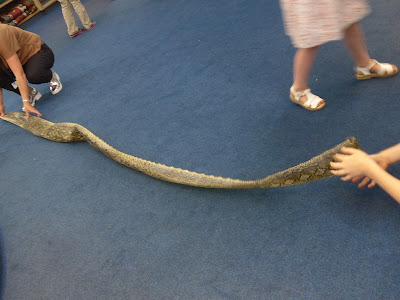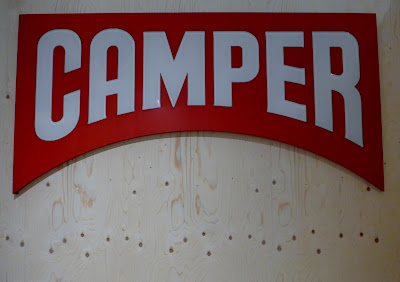We have recently returned from a family holiday in Tuscany, Italy. We went with extended family and hit all the popular tourist spots like the Uffizi Gallery and the Galleria dell'Accademia which houses Michelangelo's David, in Florence. These big celebrity museums, although amazing, are quite hard going. Guidebooks recommend three to four hours for the Uffizi Gallery and you get to see more Renaissance art than you can possibly take on board and in our case possibly understand. With so much to look at, we soon reached saturation point with Renaissance art.
We could see how beautiful the paintings were but it was difficult to understand the context in which these paintings were originally made and hung. We didn't always "get it", and sadly it seemed that for many museums, their priority was to get people through the doors, along the visitor route, and safely out the other end without communicating the whys, whats and wherefores of the art works to your everyday visitor.
Apart from... the Museo Benozzo Gozzoli, a small local museum in the town where we were staying. For me, this museum "got it", understood how to talk to visitors, even English ones. It was a museum where we "got it" too, and made sense of all the other frescoes we had seen.
The Museo Benozzo Gozzoli houses the frescoes from two 15th century chapels painted by a local man, Benozzo Gozzoli.
 |
| Benozzo Gozzoli |
The two chapels being the Tabernacle of the Visitation,
...and the Tabernacle of the Madonna of the Cough.
Sounds a little like a Monty Python title, but this chapel was where mothers brought their sick children who were more often than not afflicted with whooping cough, rife in Tuscany.
Initially the frescoes in these two chapels had been rescued from further deterioration and displayed in a local library. The library wasn't up to the job, so locals rallied round and got a purpose-built museum built to house them. The paintings were restored and remounted as they would have originally been, on specially built full-size models.
Which can be viewed from the ground,
...or from higher up.
You may be wondering why so much of the lower part of the frescoes are missing. This is due to the regular flooding of the River Elsa washing the paintings away. One of the reasons the frescoes were removed.
Models of the chapels helped us understand scale.
And if you were wondering what these chapels originally looked like and where they stood, there are photos.
In 1965 the removal of the frescoes from these chapels was deemed necessary and during the removal which involved strips of cotton, animal glue and hot water the original drawings under the paintings were revealed.
These drawings were done in a red earth pigment, the final part of the preparation before the painting began.
Underneath a fresco are many layers, stages of preparation. Firstly the stone walls are rendered with plaster made from water, lime and sand. Then outlines are drawn with charcoal. When the artist is happy with it, red pigment is applied and all the details filled out. Then the charcoal lines are brushed away with feathers. After that a new thin layer of plaster is applied to the drawing, only enough to cover the expected area to be worked on that day, as the surface to be painted needed to be damp.
This explains why the Museo Benozzo Gozzoli contains paintings and the original drawings, originally separated from each other by 2mm of plaster.
There was a smaller scale model on display.
Decorated by kids, their version of the original.
We loved the Museo Benozzo Gozzoli. The passion that it had for saving, restoring and remounting the paintings was evident in the way they told their story. Rightly proud of their local heritage, showing it off and explaining it to visitors, drawing us in and helping us understand.
The Museo Benozzo Gozzoli may be a little far for most readers of this blog to visit, but if you're ever in the area, we highly recommend it over all the big city, as my daughter would say "fancy pants", museums in the guidebooks.
Details on their website here.

























































